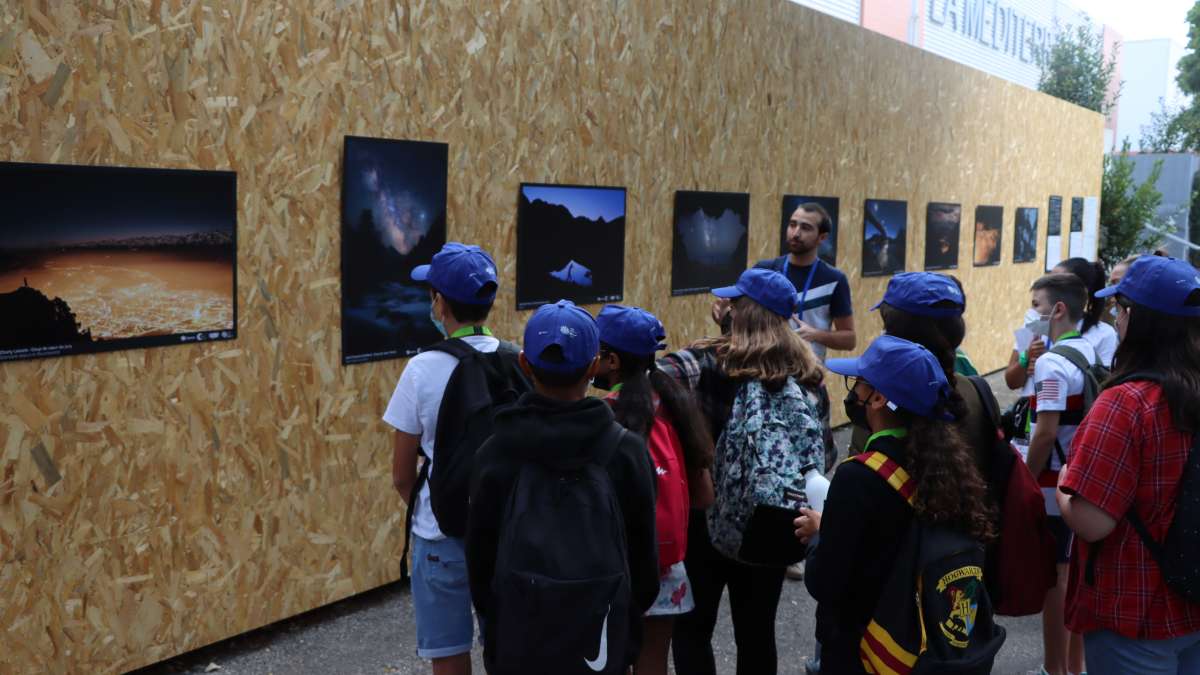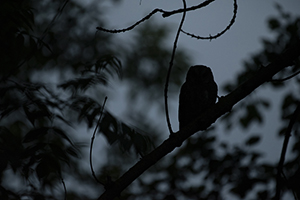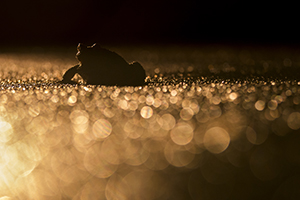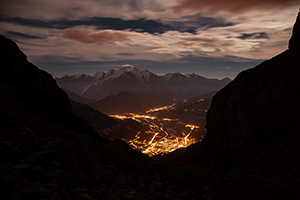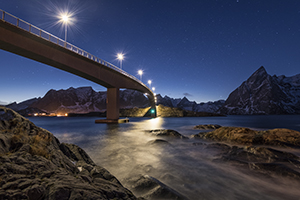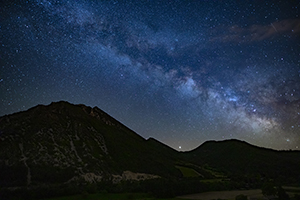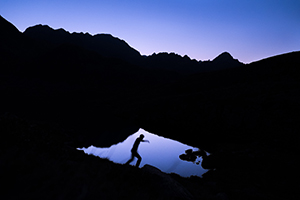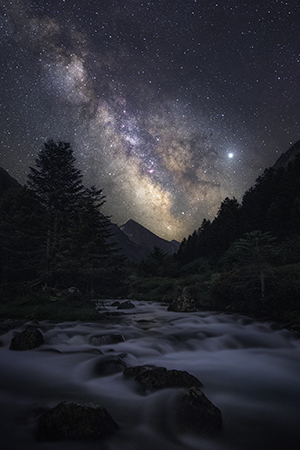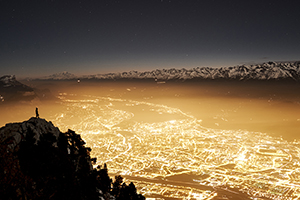Attention, les images présentées ici restent la propriété de leurs auteurs.
Merci de nous contacter pour être mis en relation avec eux pour tout souhait d'utilisation.
La première partie de l'exposition est composée de deux affiches explicatives et des 9 lauréats :
- un gagnant Junior et un gagnant Sénior pour chacun des 3 thèmes :
- biodiversité nocturne
- paysage nocturne en lumière naturelle
- paysage nocturne en lumière artificielle
- un coup de coeur Junior
- un coup de coeur Sénior
- un coup de coeur toute catégorie.
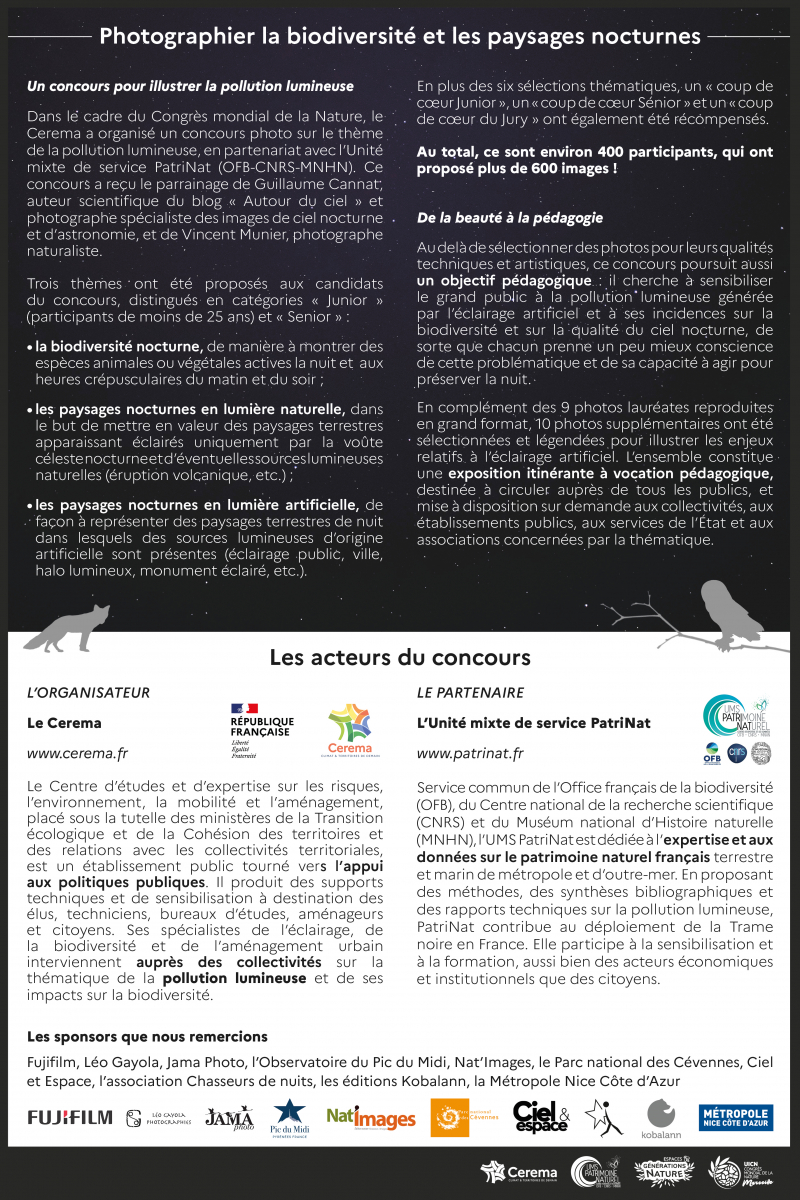
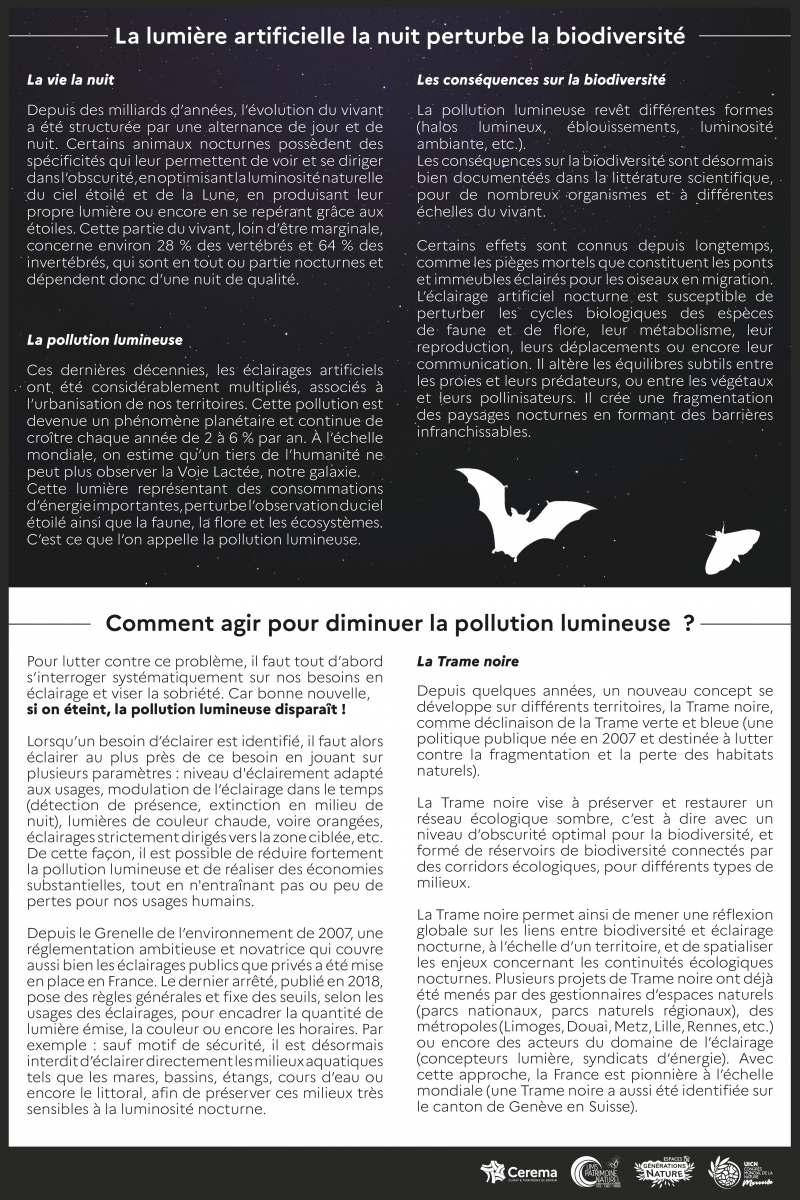
Photos gagnantes
Dans l'exposition "physique", ces images font 60x90cm.
Biodiversité nocturne
Paysage en lumière artificielle
Paysage en lumière naturelle
Coups de coeur
La seconde partie de l'exposition est composée de 10 images, sélectionnées par les organisateurs du concours pour leur bonne
illustration des enjeux liés à la biodiversité. Les images sont complétées de légendes explicatives. Vous retrouverez en bas de
page les références exactes des articles cités, rangés par affiche dont le titre est rappelé.
Dans l'exposition "physique", ces images font 30*40 cm.
Les légendes accompagnant les petites photos font référence à différents auteurs scientifiques. Les articles sont listés ci-dessous :
LE CIEL ÉTOILÉ, UNE SOURCE DE RÊVE ET D'ÉMERVEILLEMENT
Foster J.J., Smolka J., Nilsson D.E. and Dacke M., 2018. How animals follow the stars. Proceedings of the Royal Society B. _Vol. 285,issue 1871, article ID 20172322.
http://doi.org/10.1098/rspb.2017.2322 [1]
DES ESPÈCES ADAPTÉES À L'OBSCURITÉ
Gerrish G.A., Morin J.G., Rivers T.J. and al., 2009. Darkness as an ecological resource: the role of light in partitioning the nocturnal niche. _Oecologia. _Vol. 160, pp. 525–536.
https://doi.org/10.1007/s00442-009-1327-8 [2]
Clarke J.A., 1983. Moonlight's influence on predator/prey interactions between short-eared owls (_Asio flammeus_) and deermice (_Peromyscus maniculatus_). _Behavioral Ecology and sociobiology. _Vol. 13, pp. 205–209.
https://doi.org/10.1007/BF00299924 [3]
TROUVER DES REPÈRES LA NUIT POUR SE DÉPLACER
Dacke M., Baird E., Byrne M., Scholtz C.H., Warrant E.J., 2013. Dung Beetles Use the Milky Way for Orientation. _Current Biology_. Vol. 23, issue 4, pp. 298-300. ISSN 0960-9822.
https://doi.org/10.1016/j.cub.2012.12.034
Mauck B., Gläser N., Schlosser W. and al., 2008. Harbour seals (_Phoca vitulina_) can steer by the stars. _Animal Cognition_. Vol. 11, pp. 715–718.
https://doi.org/10.1007/s10071-008-0156-1
Baker R.R., 1987. Integrated use of moon and magnetic compasses by the heart-and-dart moth, _Agrotis exclamationis_. _Animal Behaviour_. Vol. 35, issue 1, pp. 94-101. ISSN 0003-3472.
https://doi.org/10.1016/S0003-3472(87)80214-2
Able K., Able M., 1990. Calibration of the magnetic compass of a migratory bird by celestial rotation. _Nature. _Vol. 347, pp. 378–380.
https://doi.org/10.1038/347378a0 [4]
ÊTRE NOCTURNE : À QUEL POINT ?
Ager A.A., Johnson B.K., Kern J.W., Kie J.G., 2003. Daily and seasonal movements and habitat use by female rocky mountain elk and mule deer. _Journal of Mammalogy_. Vol. 84, issue 3, pp. 1076–088.
https://doi.org/10.1644/BBa-020
LA POLLUTION LUMINEUSE, UNE MENACE MONDIALE POUR LA BIODIVERSITÉ INSUFFISAMMENT CONSIDÉRÉE
Kyba C.C.M., Kuester T., Sánchez de Miguel A., Baugh K. Jechow A., Hölker F., Bennie J., Elvidge C.D., Gaston K.J. and Guanter L., 2017. Artificially lit surface of Earth at night increasing in radiance and extent. _Science Advances_. Vol. 3, no. 11, id. e1701528.
http://dx.doi.org/10.1126/sciadv.1701528 [5]
DES RELATIONS ENTRE ESPÈCES PERTURBÉES PAR LA LUMIÈRE
Willmott N.J., Henneken J., Elgar M.A., Jones T.M., 2019. Guiding lights: Foraging responses of juvenile nocturnal orb-web spiders to the presence of artificial light at night. _Ethology_. Vol. 125, issue 5, pp. 289– 297.
https://doi.org/10.1111/eth.12852 [6]
Martín B., Pérez H., Ferrer M., 2018. Effects of natural and artificial light on the nocturnal behaviour of the wall gecko. _Animal Biodiversity and Conservation_. Vol. 41-2, pp. 209-215.
https://doi.org/10.32800/abc.2018.41.0209 [7]
Azam C., Le Viol I., Julien J.F. and al., 2016. Disentangling the relative effect of light pollution, impervious surfaces and intensive agriculture on bat activity with a national-scale monitoring program._Landscape Ecology_. Vol. 31, pp. 2471–2483.
https://doi.org/10.1007/s10980-016-0417-3 [8]
JOUER AVEC LA LUMIÈRE POUR FORCER L’ACTIVITÉ BIOLOGIQUE, UN MÉCANISME BIEN CONNU
Shoup G.P., 1918. Artificial lighting of poultry houses in western Washington. _Journal of the American Association of Instructors and Investigators of Poultry Husbandry_. Vol. 4, issue 6,
pp. 44-47. ISSN 2666-3651.
https://doi.org/10.3382/ps.0040044b [9]
Stutte G.W., 2009. Light-emitting diodes for manipulating the phytochrome apparatus. HortScience_. Vol. 44, issue 2, pp. 231-234.
https://doi.org/10.21273/HORTSCI.44.2.231 [10]
